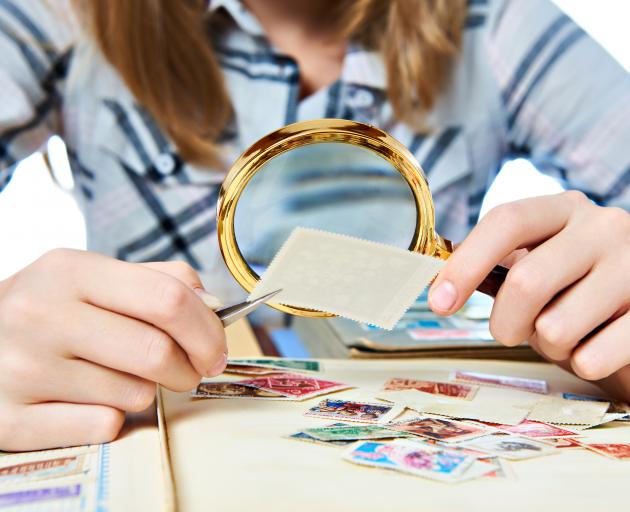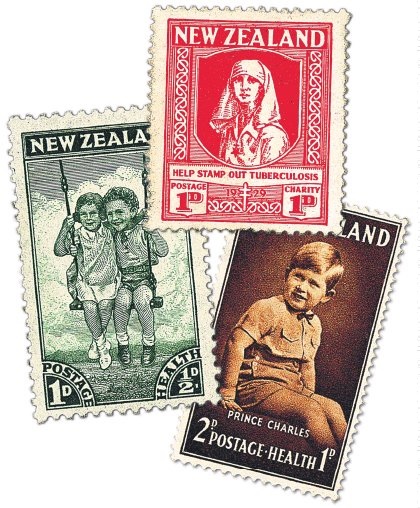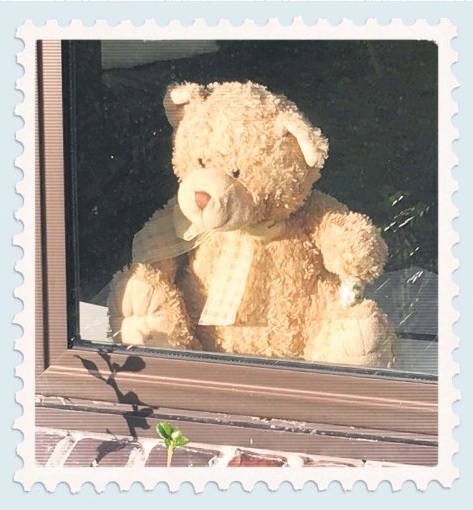
Talk about social distancing. The young Otago man sounded like he was being asked to describe the time he went to the supermarket in his grandfather’s hand-me-downs, when The Weekend Mix phoned to ask about his stamp collection.
"No, I wouldn’t be interested in being in the paper for that," he says.
It is not the expected response, especially given that he reportedly has quite an impressive collection.
"It’s a bit of an odd hobby," he adds, explaining his reluctance.
Which is not the best start to inquiries about an apparent international swing back to stamp collecting among younger generations.
Postage stamps — bits of government-issued paper gummed to letters proving a postage fee has been pre-paid — were first used in England almost two centuries ago. May 6 marks the 180th anniversary of those original penny black and tuppenny blue stamps.
From then, it took only a year for stamp collecting to begin. In 1841, an advertisement was placed in London’s The Times newspaper: "A young lady being desirous of covering her dressing-room with cancelled postage stamps invites the assistance of strangers in her project".
Within 20 years, there were philatelic (stamp collecting) societies in many countries.
In 1855, New Zealand joined the pre-paid post world with one penny, tuppenny and one shilling stamps featuring the head and shoulders of Queen Victoria.
Collecting stamps and arranging them thematically in albums became a popular pastime for all ages.
Two generations ago, most New Zealand towns and cities had flourishing stamp clubs, in addition to large stamp clubs at almost every intermediate and secondary school.
But times changed. The digital world, in particular, appeared to deal a death blow to stamps and stamp collecting.
Email decimated postal mail. Three decades ago, New Zealand Post produced 320million stamps a year. Now it is less than a tenth of that figure.
In Western countries, online video games have taken their toll on the full gamut of real-world sports and leisure pursuits, including stamp collecting.
In Dunedin, the few remaining stamp and postcard collectors combined forces some time ago. The city’s last junior stamp club folded about 15 years ago.

As a teenager, White was already a focused philatelist. At 15, he found, at the local post office, a block of 20, fivepence, 1960 pictorials with the yellow colour missing.
He sold them for £500, about $15,000 in today’s money.
Much of the windfall was invested in scarcer stamps; a collection that was sold to buy his first house when he was 30.
White, who founded the Dunedin Stamp Centre in 1968, says it is hard to explain the allure of stamp collecting to non-collectors.
For many, it is about the thrill of the chase, the excitement of the unusual find and the satisfaction of completing the set. For others, it is about the aesthetic qualities of the stamps.
He knew a now-deceased Dunedin collector whose obsession was one particular early British stamp, of which he amassed 75,000 examples.
Potential collections are almost limitless in their variety. White has known people who collected only stamps featuring facial hair, only stamps with breasts and only stamps that in one way or another were about elephants (which gave a stamp of Napoleonic warship HMS Elephant a spot in that collection).

"You find that older collectors, they played around with it as kids and now they are coming back and doing it right," White says.
Young stamp collectors, however, seem to be as rare and self-conscious as the proverbial chicken’s molars.
Which would be the end of the story, except for rumours in overseas news media of a recent resurgence of interest in philately among under-40s.
This month, The Observer reported that millennials, despite some never having posted a letter, were falling in love with stamp collecting.
The United Kingdom newspaper quoted 37-year-old Suzanne Rae, of North Yorkshire, who said philately was gaining in popularity among her peers because it was seen as a creative escape from screen-based lives.
"Philately is tangible: it’s relaxing and unplugged. It’s also very Instagrammable," said Rae, who became a full-time stamp dealer two years ago. She is also only the second chairwoman of the UK-based Philatelic Traders Society in its 91-year history.
The Observer story quotes other younger philatelists, including 29-year-old Constanze Dennis.
Dennis, a senior auctioneer at Grosvenor Philatelic Auctions in London, says stamp collecting combines elements she loves.
"I have a scientific background, so the analytical side really appeals," she says.
"My personal philatelic interest is crash mail, envelopes salvaged from plane crashes. Definitely morbid but equally fascinating."
Is this rebirth of all things stamps happening here, then? Are young New Zealanders singing, as Van Morrison (almost) crooned, "Have I told you philately that I love you?"
Apparently not. Or, perhaps, not apparently.
The Weekend Mix tracked down accomplished stamp collector, 22-year-old Warrick Wright, of Kaiapoi.
Wright was 10 when he began collecting. He has been exhibiting at stamp shows since 2012.
His most prestigious collection chronicles the "Revenue Gathering Stamps of New Zealand". These are not postage stamps, but rather stamps that were stuck to documents or products to show that taxes and fees had been paid.
In 2016, Wright’s collection won the Grand Youth Award at the 10-yearly New York international stamp fair.
Wright praises stamp collecting as an ideal pursuit for those who like to keep their minds active but also want flexibility.
"[It] is one of those hobbies that you can pick up, muck around with for a few hours, and then put away again."
Wright used to go to camps organised by the Youth Philatelic Council, but says they have stopped as numbers have decreased.
He cannot think of any other stamp collectors in the South who would fit the Millennial or Gen-Z moniker.
The same goes for Jane Dennison, who is secretary of the Dunedin Stamp and Postcard Club. It is the sole remaining stamp club in Otago. The club has about 70 members on its books, but meetings average 15 to 20 people, she says. Most members are over 65.
Young stamp collectors, however, might still be out there, perhaps even in growing numbers, White says.
He points out that clubs and organisations of all disciplines have trouble attracting new members these days. But young people are still spending "serious money" on collectables such as comics, superhero figures and game cards.
"They might be extremely active collectors, but they prefer to do it online or through live auctions."
Buoyed by the suggestion, The Weekend Mix this week joined a private online group for buyers, sellers and collectors of New Zealand Stamps, banknotes and coins.
The authors of the two most recent posts were contacted to test the idea that younger generations are rediscovering the joy of stamp collecting.
The results were inconclusive.
Amy Altman, of Auckland, who is under 40, posted that she had been left her grandparents’ stamp collection.
"It’s all European (Italy, Bulgaria, Austria, Spain, Czechoslovakia). My poppa used to say they are worth money and very rare".
But this is not the beginning of a new love affair with stamps, Altman says.
"I am wanting to find out where I can sell them or at least get an idea of price.
"I’m ... not interested in the stamps apart from selling them."
Donna Burkitt’s post is more hopeful.
The Northland mum posted, "We are newbies to the stamp world. Been given boxes of old and new loose stamps ... that need organising. What’s the best way to organise them? ... Great hobby for the teenager during lockdown."
Yes, Burkitt confirmed, the stamps, which had been passed down from her husband’s grandfather, were being sorted and enjoyed by her 13-year-old daughter Katie.
"So far, she has shelved all the albums and has placed all the loose stamps in boxes. Next move is to find some empty stamp albums so she can sort through the loose stamps."
And if Katie is out there, there is every chance there are other Kiwi youngsters out there who are also being infected with the stamp bug.
Community transmission may already have begun.
Stamps have virus licked

But the two are having some fascinating interactions in a 21st Century, virus-infected world.
People with the Covid-19 virus transmit it in saliva droplets when they cough and talk, and also when they sneeze.
Last month, as the virus spread rapidly around the world, New Zealand was preparing to host NZ2020, the biggest international stamp fair to be held on these shores in 30 years. More stamps than you could possibly lick were going to be on display in Auckland for four days.
Some international exhibitors had already arrived when the first restrictions on large gatherings and international flights were announced. The organisers hastily rejigged the event as a national stamp fair, which began on March 19. But when Prime Minister Jacinda Ardern made the nationwide lockdown announcement the stamp fair had no option but to shut up shop. Normally the servant of stamps, saliva was now dictating terms.
New Zealand Post, however, says there is little to fear from stuck stamps.
All of NZ Post’s Kiwistamps and some of its special issues are self-adhesive. So, in many cases there is no need to lick them.
And if a stamp does need moisture, "our recommendations have always been to use a sponge, water roller or moisten your finger and apply it to the stamp," an NZ Post spokeswoman says.
Mail from overseas should not be a worry either, she says.
"The advice from the World Health Organisation is that Covid-19 does not last long on such surfaces, and due to the time taken to transport from overseas, and the environmental factors mail is subject to, there is no risk."
That’s comforting. But the cheerful news goes further. Stamps and saliva are actually a high-tech force for good.
That is because saliva contains DNA while the gum on the back of stamps, it turns out, is quite good at protecting the microscopic material in saliva.
With the advance of technology, DNA can now sometimes be extracted from a licked stamp, even decades later.
In 2018, a woman in Ireland, who had been abandoned at birth, was able to identify her birth father. Her extensive genealogical research had already narrowed the field, but it was DNA from a stamp her father had licked 30 years previous that clinched it.
Bears honoured for remaining at their post

This week, NZ Post announced a six-stamp series to mark the Covid-19 pandemic and nationwide lockdown.
Many households have put soft toy bears in their street-facing windows to greet all the new passers-by taking the air in their neighbourhoods.
"Through the simple act of putting a teddy bear in the window of their homes, New Zealanders have been able to participate in creating a magical experience for kids (and big kids) during a stressful time," NZ Post Head of Stamps Antony Harris says.
In response, NZ Post is inviting Kiwis to submit a photo and some information about their bear, or bears. Six entrants will have their bears featured on the stamps, which are due out on May 20.
The initiative is in partnership with The NZ Bear Hunt.
From the sale of each New Zealand Bear Hunt stamp sheet, $3 will be donated to New Zealand Red Cross.
For more information, go online to www.facebook.com/NZStampsandCoins/.












